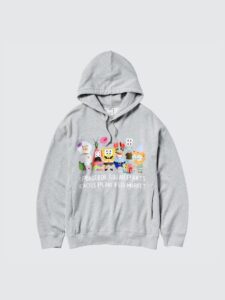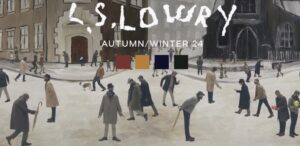Walter Van Beirendonck’s journey in the fashion world is as unconventional and groundbreaking as his designs. As a member of the Antwerp Six—a group of avant-garde designers who redefined the fashion landscape in the 1980s—Van Beirendonck has consistently pushed the boundaries of creativity, exploring the intersection of art, technology, and wearability. His work, rooted in innovation and boldness, has not only influenced contemporary fashion but also shaped the cultural zeitgeist. From his formative years at the Royal Academy of Fine Arts to his sci-fi-inspired collections and influential sublabels, Van Beirendonck’s career reflects an enduring commitment to challenging conventions and inspiring new ways of thinking about clothing.
The Royal Academy of Fine Arts: Foundations of Creativity
Van Beirendonck’s career began at the prestigious Royal Academy of Fine Arts in Antwerp, where he studied alongside future luminaries such as Martin Margiela and other members of the Antwerp Six. The Academy’s rigorous curriculum emphasized discipline, creativity, and an avant-garde approach to design. Students were tasked with weekly assignments that pushed them to explore unconventional materials and challenge traditional methods.
One of the Academy’s signature exercises involved crafting garments using only white cotton, encouraging students to focus on form and construction rather than color or pattern. Another iconic assignment required students to create clothing from materials found in a kitchen—an exercise that Van Beirendonck recalls vividly. He used checked towels combined with plastic, an early example of his penchant for mixing traditional and technical fabrics. These constraints sparked his lifelong fascination with hybrid textiles and unorthodox design techniques.
The Academy’s philosophy of “doing it again,” as described by fellow alumnus Glenn Martens of Diesel, instilled a relentless pursuit of refinement in Van Beirendonck. This foundational training prepared him for a career defined by experimentation and a refusal to conform to conventional fashion norms.
The Antwerp Six: Revolutionizing the Fashion World
In 1980, Van Beirendonck graduated from the Academy alongside his contemporaries, a group later dubbed the Antwerp Six by the fashion press. At the time, Antwerp was better known for its diamond district than its fashion scene, but this collective of designers quickly changed that perception. Together, they bussed their collections to the British Designer Show in London in 1986, bypassing the more established fashion capitals of Paris and Milan. London’s openness to emerging talent provided the perfect platform for their bold and provocative designs.
Van Beirendonck’s first collection showcased a mixology of influences ranging from The Flintstones to Jules Verne, with elements of African body painting woven into his garments. His ability to merge disparate references into cohesive, imaginative designs caught the attention of buyers and press alike. The Antwerp Six secured a collective order from Barney’s in New York, and their innovative approach to fashion soon earned them global recognition.
For Van Beirendonck, this breakthrough marked the beginning of a career characterized by subversion, humor, and a love for the fantastical. His designs often juxtaposed whimsy with darker, more provocative themes, creating collections that were as thought-provoking as they were visually striking.
Early Career and Experimentation
Following his graduation, Van Beirendonck sought to establish his brand while honing his skills in other roles. After failing to secure a paid internship in Paris, he returned to Antwerp and launched his eponymous label, funding it through a position at Bartsons, Belgium’s answer to Burberry. This experience refined his tailoring expertise and introduced him to the intricacies of creating high-quality garments.
Van Beirendonck’s exposure to sportswear and streetwear came through his work with Italian designer Gianfranco Ferré. His sportswear line, Rhinosaurus Rex, for Ferré introduced him to baggy silhouettes and functional materials, elements that would later become integral to his own designs. This period was pivotal in shaping his aesthetic, blending technical fabrics with avant-garde concepts.
W.&L.T.: Wild and Lethal Trash
In 1993, Van Beirendonck launched W.&L.T. (Wild and Lethal Trash), a sublabel that embodied his love for sci-fi futurism, graphic design, and wearable art. Unlike his earlier knitwear-focused collections, W.&L.T. catered to a younger audience with more affordable, accessible pieces. The line was a hit among the MTV generation in Europe, thanks to its bold graphics, vibrant colors, and theatrical runway shows.
Van Beirendonck’s W.&L.T. collections often featured latex bodysuits, Leigh Bowery-inspired silhouettes, and garments that blended humor with social commentary. These designs resonated with a youth culture eager for bold statements and unconventional fashion. His runway shows became legendary for their spectacle-like presentations, incorporating elements of performance art, sci-fi aesthetics, and experimental music.
W.&L.T. also reflected Van Beirendonck’s fascination with technology and innovation. He frequently experimented with materials like neoprene, metallic fabrics, and LED lighting, creating pieces that felt ahead of their time. This futuristic approach, combined with his graphic storytelling, cemented W.&L.T.’s place as one of the most influential sublabels of the 1990s.
Themes and Influences in Van Beirendonck’s Work
Throughout his career, Van Beirendonck has drawn inspiration from a wide range of sources, including science fiction, African tribal art, pop culture, and environmental concerns. His collections often explore themes of identity, technology, and the human condition, pushing viewers to question their assumptions about clothing and society.
Futurism and Technology
Van Beirendonck’s designs frequently incorporate elements of sci-fi futurism, such as padded crash test dummy suits and alien-inspired prints. His Spring/Summer 2024 collection, for example, features an AI-inspired alien alphabet print, showcasing his interest in the intersection of fashion and emerging technologies.
Humor and Whimsy
Despite the often serious themes underlying his work, Van Beirendonck has a playful approach to design. From King Kong sweaters to embroidered baby harnesses resized for adults, his collections are filled with unexpected, humorous touches that challenge traditional notions of high fashion.
Sustainability and Repurposing
Van Beirendonck’s early experiences at the Royal Academy instilled in him a resourceful approach to design. He continues to experiment with repurposed materials and unconventional textiles, reflecting a commitment to sustainability and innovation.
Legacy and Influence
Walter Van Beirendonck’s impact on the fashion world is profound. As a member of the Antwerp Six, he helped establish Belgium as a hub of avant-garde design. His willingness to challenge norms and embrace the unconventional has inspired countless designers, from Glenn Martens to Craig Green.
Van Beirendonck’s work also paved the way for the rise of streetwear and graphic-driven fashion, influencing brands like Off-White and Balenciaga. His bold use of color, materials, and theatrical presentation continues to resonate with younger audiences, ensuring his relevance in an ever-evolving industry.
Final Thoughts
Walter Van Beirendonck’s career is a testament to the power of creativity, resilience, and innovation. From his formative years at the Royal Academy to his role in the rise of the Antwerp Six and the success of W.&L.T., he has consistently pushed the boundaries of what fashion can be. His ability to blend tradition with futurism, humor with provocation, and art with wearability has made him a true visionary in the industry.
As fashion continues to evolve, Van Beirendonck’s legacy serves as a reminder that the most impactful designs come from those who dare to challenge conventions and imagine new possibilities.
No comments yet.








